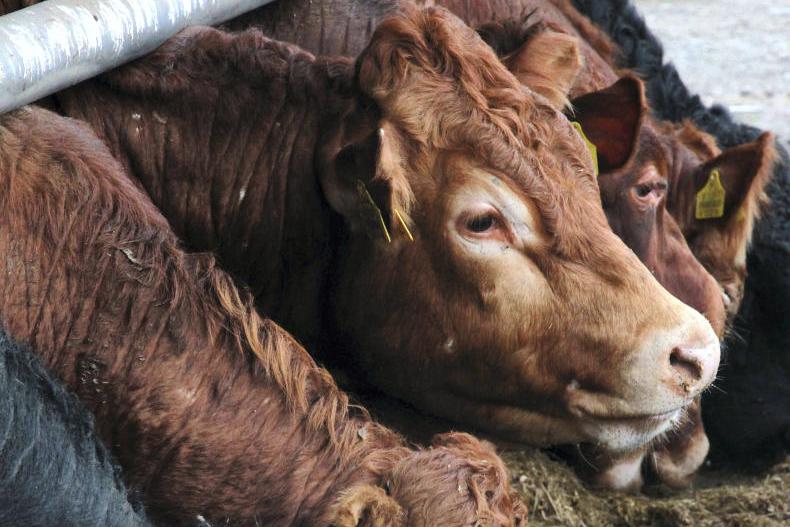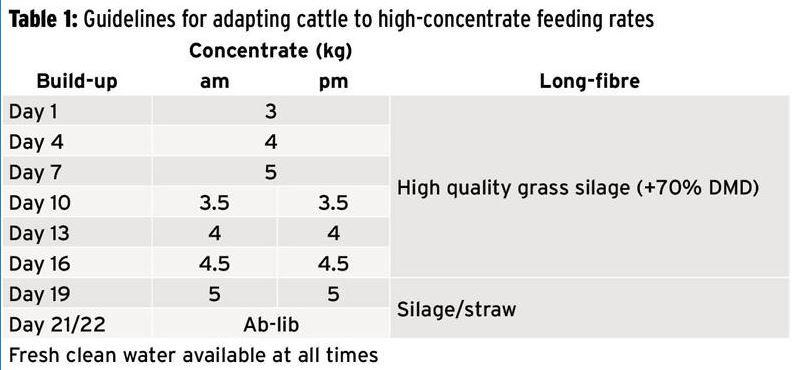
LOYALTY CODE:
The paper code cannot be redeemed when browsing in private/incognito mode. Please go to a normal browser window and enter the code there

LOYALTY CODE:
The paper code cannot be redeemed when browsing in private/incognito mode. Please go to a normal browser window and enter the code there
This content is copyright protected!
However, if you would like to share the information in this article, you may use the headline, summary and link below:
Title: Keep acidosis at bay in your shed this winter
Livestock specialist Ciarán Lenehan examines acidosis – the big feed-related health risk for housed cattle this winter.
https://www.farmersjournal.ie/keep-acidosis-at-bay-in-your-shed-this-winter-303746

ENTER YOUR LOYALTY CODE:
The reader loyalty code gives you full access to the site from when you enter it until the following Wednesday at 9pm. Find your unique code on the back page of Irish Country Living every week.

CODE ACCEPTED

You have full access to farmersjournal.ie on this browser until 9pm next Wednesday. Thank you for buying the paper and using the code.

CODE NOT VALID
Please try again or contact us.
For assistance, call 01 4199525
or email subs@farmersjournal.ie
Sign in

Incorrect details
Please try again or reset password
If would like to speak to a member of
our team, please call us on 01-4199525
Reset
password
Please enter your email address and we
will send you a link to reset your password

If would like to speak to a member of
our team, please call us on 01-4199525
Link sent to
your email
address
![]()
We have sent an email to your address.
Please click on the link in this email to reset
your password. If you can't find it in your inbox,
please check your spam folder. If you can't
find the email, please call us on 01-4199525.
![]()
Email address
not recognised
There is no subscription associated with this email
address. To read our subscriber-only content.
please subscribe or use the reader loyalty code.
If would like to speak to a member of
our team, please call us on 01-4199525
 This is a subscriber-only article
This is a subscriber-only article
Update Success !
When we feed cattle, there is a third party involved – the rumen. In simple terms, bugs in the rumen break down feeds into acid compounds, which the animal can use as a source of energy. There are billions of these bugs in the rumen and prevailing bug type will be based entirely on the animal’s diet. For example, fibre-digesting bugs will predominate in a forage-based scenario and starch-digesters in cattle on intensive finishing diets.
These bugs do not like change. The growth check that comes in the first few days of a switch in diet type is due to an adjusting rumen bug population. Where this occurs gradually in cattle moving to a high-concentrate diet, there should be no issues. The rumen population needs enough time to evolve and adapt to cope with the surge in acid production that comes with a high-concentrate diet.
If the change to a starchy, high-concentrate diet is a spontaneous one, there will suddenly be more acid in the rumen than the existing bug population can cope with. If the problem is pronounced enough, the acid will damage the rumen wall, affecting the animal’s ability to absorb nutrients. The capacity of the rumen wall to absorb nutrients can be affected for up to six months following a bout of acidosis.
Acidosis can be acute, where the rumen pH is below 5.2 for an extended period, or sub-acute (SARA), where pH drops to 5.5 or less for an extended period.
Acute acidosis has pronounced symptoms and typically occurs during the adaption to high-concentrate diets. It is the type that will leave lasting effects on our animal, if they survive. Symptoms of acute acidosis include:
Sub-acute acidosis is more difficult to detect and although the effects on the individual animal won’t be as severe as acute acidosis, bouts of SARA typically affect multiple animals in a group and, if undetected, can have huge financial implications as production nose-dives. Symptoms include:
Knock-on effects
In addition, acidosis predisposes animals to other ailments. A build-up of acids in the rumen leads to the formation of inflammatory agents which can travel to the animal’s feet via the bloodstream and cause lameness.
A damaged rumen wall can also facilitate the absorption of unwanted bacteria into the bloodstream. These bacteria accumulate in the liver and can cause liver abscesses. Acidosis can also lead to bloating as the viscosity of the fluid in the rumen changes and traps gas, which would otherwise be belched out, as foam. As the animal bloats up, physical pressure is put on the lungs which can lead to suffocation.
Prevention of acidosis
Prevention is the name of the game with acidosis. Gradual adaption to a high-concentrate diet affords the rumen population time to acclimatise. When building up to any type of finishing diet (Table 1), offer no more than 3kg of meals per head initially.

Then, increase meal allowance by 1kg every three days. Delay an increase if animals are slow to consume the meals or if there is any evidence of SARA symptoms. Above 5kg of feeding daily, split feeds in two and continue to increase total daily feed allowance by 1kg every three days. Once animals are consuming 10kg daily, concentrates can be offered ad-lib and feed should never be allowed to run out.
Cattle should have access to long fibre (straw/silage) at all times. Hay can be offered too, but in my experience cattle sometimes eat too much hay if given the opportunity and concentrate intake is affected – reducing performance.
Long fibre stimulates rumen contractions, which help to prevent acid from accumulating in the stomach. It also slows down the rate of rumen digestion and promotes both cud chewing and salivation – all of which help to prevent acidic conditions.
Cattle will self-regulate their long fibre intake, but cannot if it runs out. Finishing cattle on ad-lib will eat 5-6kg of fresh grass silage per head daily along with their meals. If offering straw, allow 2kg per head.
At very high levels of concentrate feeding, the animal will be getting very little energy from the fibre it eats as starch-digesting bugs will have taken over in the rumen. Water is crucial too and water issues can be a big contributor to below-par performance in finishing situations. If at all possible, cattle on ad-lib need to be provided with access to multiple water points with good flow rates and/or large-volume troughs.
Most farmers purchasing compound feed mixes are unaware that what they’re feeding their cattle likely contains additives to prevent acidosis already. On feed labels, ingredients such as sodium bicarbonate and calcium carbonate appearing at the end of the list are buffers. These compounds act in a fire-fighting mechanism by neutralising acid conditions. The anti-indigestion tablets that you or I take after a takeaway contain the same ingredients.
Yeasts and probiotics are also common in compound feeds and work by optimising rumen bug efficiency. On feed labels, these appear as saccharomyces cervisae and aspergillus oryzae, among others.
Special focus: winter animal health
SHARING OPTIONS: